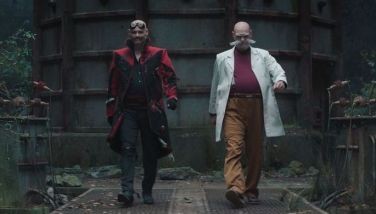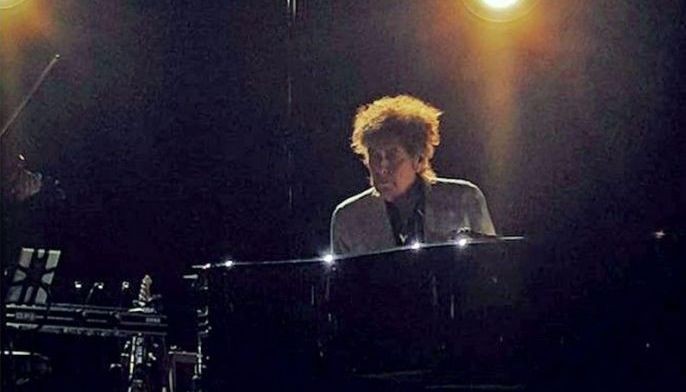WATCH: Robert Zemeckis's high-wire act in ‘The Walk’
MANILA, Philippines - On a vast Montreal sound stage, director Robert Zemeckis is hard at work recreating a lost place and time. Here his leading man, Joseph Gordon-Levitt, stands on the ledge of a gigantic rooftop set built of steel and concrete, gazing out to a similar precipice over a football field away amidst a sea of green-screen.
Yet his character, notably, doesn’t have the special powers found in your typical multiplex superhero. Instead, he’s equipped with a dream and the belief that anything is possible - as he sets off to walk a high-wire stretched between two of the tallest buildings on the face of the earth.
Zemeckis’s chosen moment in history is the morning of August 7, 1974, when a lone French aerialist, Philippe Petit, captured the world’s imagination with a seemingly impossible high-wire walk between the Twin Towers of New York’s World Trade Center.
Some 40 years later, utilizing the latest in state of the art visual effects, 3D and IMAX technology (and massive set construction), Zemeckis and Gordon-Levitt, with the aid of a small army of technicians and craftsmen, are recreating that moment as The Walk enters its final week of production. They too are accomplishing the seemingly impossible: bringing the lost towers back to glorious life. Only in film is such a feat possible now.
On set, Gordon-Levitt talks of his part in the enterprise and how he can relate to the undertaking.
“There’s a lot that’s similar about it,” he says, comparing wire-walking to acting. “When you’re acting in a movie there’s all this chaos going on around you… You have to just compartmentalize and not think about it. It’s the same on the wire. I’ve learned a little bit about how to walk on a wire and it’s the same. If you start thinking, ‘I’m up high,’ or ‘I could lose my balance,’ you’re done for.”
Seen by Zemeckis as both a mad cap caper film and a love letter to the Towers, The Walk has had a long journey to the screen. First conceived in 2007, it will reach the multiplex and IMAX alike in October, 2015.
“One of the biggest struggles I had getting this film made was that it’s very difficult to make any feature film [today] that’s not derivative,” explains the Oscar-winning director. “Anything that tries to be unique and original is the hardest type of film to make. And then to say it’s about a wire-walker and I want to make it in 3D. That’s almost an impossible feat.”
Zemeckis credits Tom Rothman, head of the newly revitalized TriStar, for making The Walk possible. “Tom and I made Cast Away when he was the head of 20th Century Fox, so we know each other from way back,” says Zemeckis. “That was a very risky movie that we made together. He was a big fan of this story and had the courage to greenlight this movie.”
“Bob Zemeckis is a true master filmmaker,” says Rothman, who helped Fox become the most profitable film studio in Hollywood under his 18-year-tenure.
“He has a rare ability to blend the epic with the intimate,” he explains. “It’s one thing to put audiences in a wire-walker’s shoes with jaw dropping visuals. It’s another to make them care emotionally. Bob is one of the few directors who can do both and who can use 3D in a way that makes a film a must see on the big screen.”
An expert at using new technology in the service of story and character, Robert Zemeckis first captured the spotlight in 1985 with “Back to the Future.” His films include: “Romancing the Stone,” “Forrest Gump,” “Cast Away,” “Who Framed Roger Rabbit,” “Contact,” “A Christmas Carol,” and most recently, the critically acclaimed “Flight,” starring Denzel Washington.
“To quote Francois Truffaut, ‘A really great movie is the perfect blend of truth and spectacle,’ and I think that’s what we go to the movies for,” says Zemeckis of his approach. “We go to see a story that is rooted in human truth and the human journey. But we also go to see a spectacle.”
The Walk, whose supporting cast includes Sir Ben Kingsley and Charlotte Le Bon, promises to put audiences in the thick of the action, as close as any of us will ever come to walking amongst the clouds ourselves. Zemeckis explains with a laugh, “if you’ve got a fear of heights, you might not be comfortable watching a lot of this, but that was another thing I loved about it.”
But the film is also an exploration of what led up to the famous walk, including Petit’s earliest childhood obsessions, his romantic entanglements, and the volatile relationship with his surrogate father figure, Kingsley’s Papa Rudi.
“Walking on a wire between the two towers of the World Trade Center is beautiful and physically daring, but there’s also a metaphor there,”says Gordon-Levitt. “It’s about believing in yourself enough to say ‘I [can] accomplish anything… I [can] be the person I want to be.’”
As for the Towers themselves and the tragedy of 9-11, both Gordon-Levitt and Zemeckis see the film as a tribute, which, given the opening of The Freedom Tower, comes at a particularly appropriate moment.
“I think it’s important to remember that tragedy doesn’t erase what was beautiful,” says Gordon-Levitt. “I think it’s also important to remember this beautiful moment… that does greater honor, to not let those towers just become a symbol of disaster, but to also remember them in this moment of beauty.”
“The movie is a love letter to the Twin Towers,” says Zemeckis. “They’re very much present in the film as characters. So it’s also a celebration. In the tragic history of those buildings, this is one glorious and human moment that happened. I think that’s something that’s important to remember too.”
Opening across the Philippines in October 2015, The Walk will be distributed by Columbia Pictures, local office of Sony Pictures Releasing International.
- Latest
- Trending

































